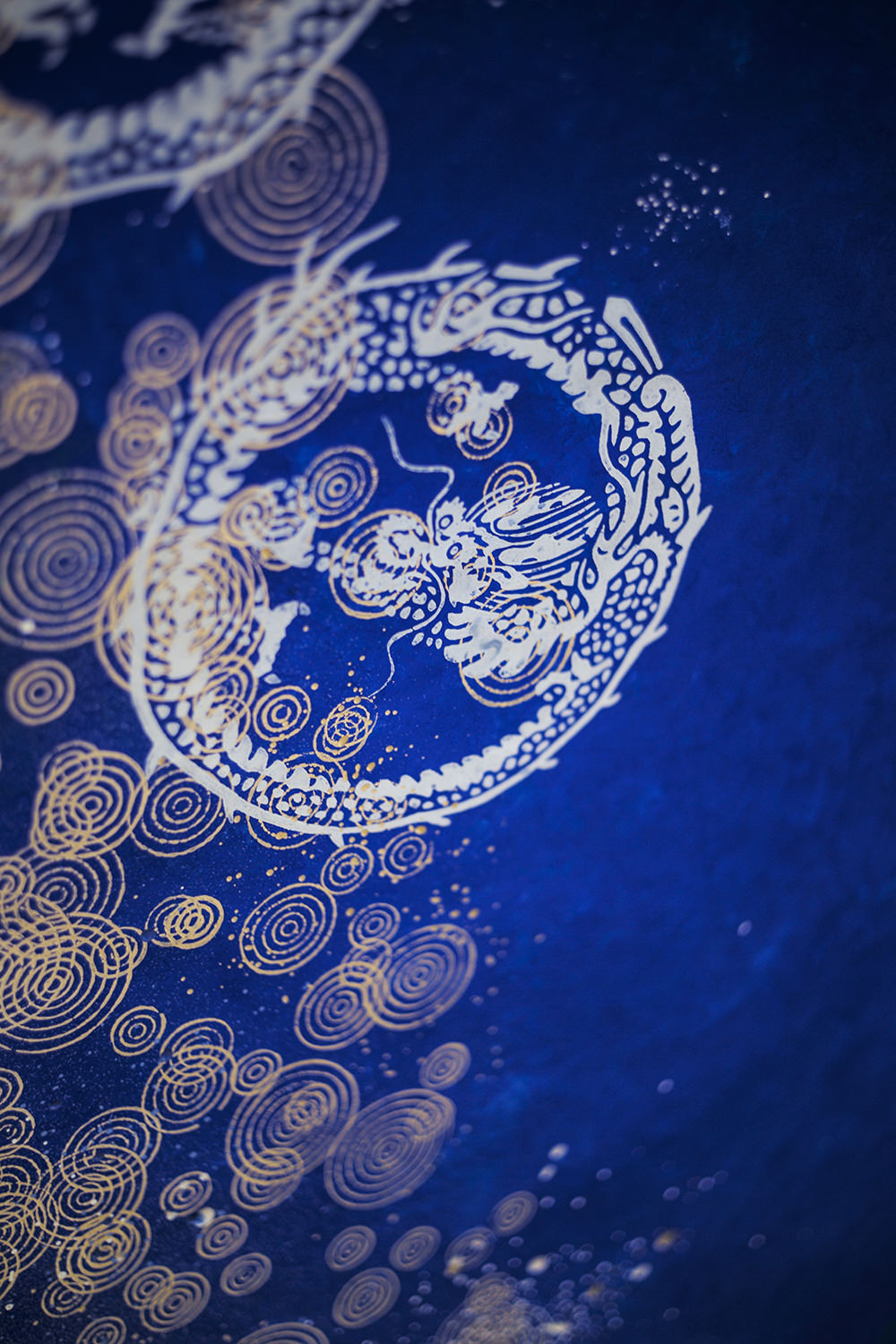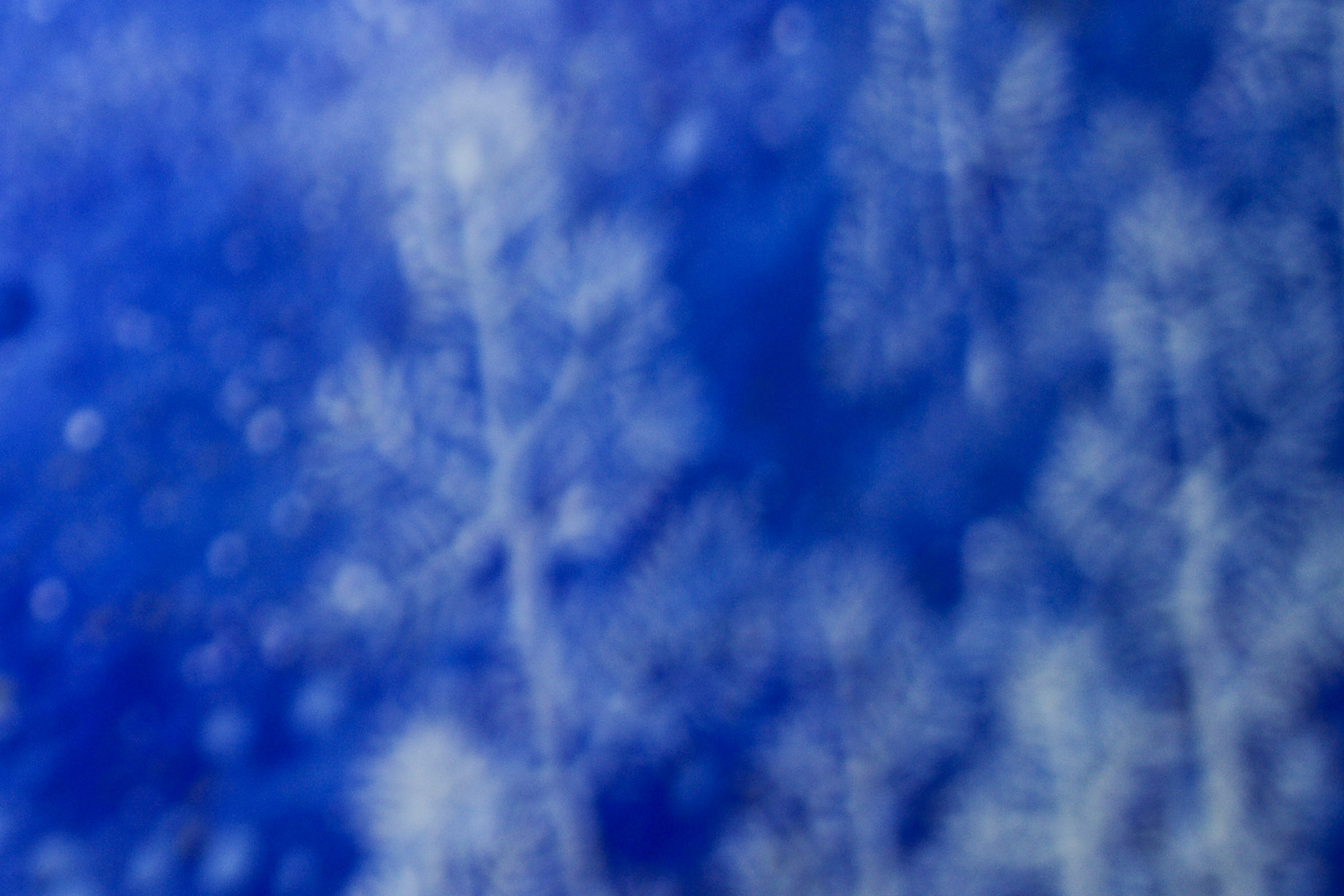Poetic art
Layering patterns to turn the message into poetry
Toto Akihiko is also engaged in attempting to create new messages by unleashing the latent power contained within patterns.
In Toto’s own words,
“Conventional karakami uses patterns to express flowing water as flowing water, stars as stars, and dragons as dragons. What I have done is to place stars on the surface of the water and depict a dragon on top of that to create my piece ‘Hoshi ni Negai o (Wish Upon a Star).’ The whirlpool karakami introduces change to regularity, with randomly positioned spirals symbolizing energy, giving it an undulating appearance and transforming the inconsistent expression of the paint into its defining characteristic. I believe that this karakami piece sought to be born from a state of self-renunciation. To intend the unintended, I felt that I was creating it together with Mizuhanome, the god of water, and I therefore named it Mizuha. I wanted to imbue poetry and a poetic sentiment to karakami by layering patterns that are neither abstract nor figurative to connect meaning to meaning and tell a story. Capturing the landscape of the heart on karakami was something that had never been attempted before.”
Source: Toto Akihiko and Senda Aiko. Jinsei wo Irodoru Monyo [The Patterns That Color Life] (Kodansha, 2020)



